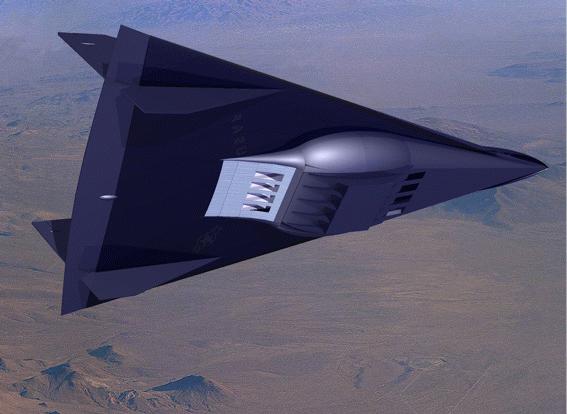
Project Aurora Plane
AURORA / SENIOR CITIZENReports of plans for a high-performance piloted replacement for the SR-71date back more than a decade. In 1979 it was reported that a:'. Mach 4, 200,000-ft.-altitude aircraft that could be afollow-on to the Lockheed SR-71 strategic reconnaissance vehicle in the 1990shas been defined by the Air Force Aeronautical Systems Division and Lockheed.'
According to Aviation Week, Project Aurora referred to a group of exotic aircraft, and not to one particular airframe. Funding of the project allegedly reached $2.3 billion in fiscal 1987, according to a 1986 procurement document obtained by Aviation Week. Followers of the much-speculated US Aurora hypersonic military jet. As the Special Access project team is believed to have tested the aircraft.

As previously noted, reports of the existence of a successor to the SR-71surfaced repeatedly during the debate over termination of the SR-71. Subsequentobservations of mysterious aerial phenomena have been connected with the 1988reports that Aurora was a Mach 6 stealthy reconnaissance aircraft that was beingdeveloped to replace the SR-71.Noted aerospace analyst Wolfgang Demisch, of First Boston Company, suggestedthat the $10 billion program would result in the production of about 30aircraft. More recently, Kemper Security analyst Lawrence Harrisconcluded that Lockheed was involved in a:'. Hypersonic replacement for the Mach 3 plus SR-71reconnaissance aircraft. Circumstantial evidence suggests that this project hasbeen underway since 1987 and that a first flight occurred in 1989. Auroracould be operational in 1995, six years after the probable first flight.' This analysis suggested that the total development costs for Aurora mightrange from $4.4 billion to $8 billion, with the procurement of 24 aircraftcosting an additional $10 billion to $24 billion.According to another report, by mid-1992:'.
Aurora was being flown from a base in the Nevadadesert to an atoll in the Pacific, then on to Scotland to refuel beforereturning to the US at night. Specially modified tanker aircraft are being usedto top up Aurora's tanks with liquid methane fuel in mid-air. The US Air Forceis using the remote RAF airbase at Machrihanish, Strathclyde, as a stagingpoint. The mystery aircraft has been dropping in at night before streakingback to America across the North Pole at more than six times the speed ofsound.
An F-111 fighter bomber is scrambling as the black-painted aircraftlands, flying in close formation to confuse prying civilian radars.' The rationale used most frequently by the Department of Defense for theSR-71's termination was financial. The Blackbird's operation and maintenancecosts were very high. Buy quern undying thoughts. According to some reports, the SR-71's O&M costs werenearly $710- million in FY-90 and FY-91. Furthermore, they argued,imaging satellites could now conduct worldwide surveillance more efficiently andless expensively than manned reconnaissance aircraft.Independent aerospace analysts, however, deflated this argument somewhat bypointing to the unique advantages aircraft bring to the reconnaissance arena.Aircraft, for example, are inherently flexible and unpredictable. Though not asfast as satellites, they can fly lower and the interval between over the horizonarrival and time-over-target is just as short.
Aircraft have a wide choice ofroutes, so tracking ships are unlikely to see it on the way in. Application oflow observable technology could further reduce warning time.
Thus, itappears plausible that aircraft may still have a role in global reconnaissance.Another analyst has considered the possibilities of 'Aurora's'characteristics and capabilities. A long-range reconnaissance follow-on to theSR-71 would be a blended delta with 75 degree leading-edge sweep andretractable low-speed foreplanes. It would be powered by two regenerativeair-turboramjet (RATR) engines of 180 kN sea-level static thrust. It would carrya crew of two and use a synthetic aperture radar with real-time datalink forreconnaissance ( Figure 4). It is suggested that this type of platformcould be very responsive, much more easily maintainable than the SR-71 and coulddeliver imagery of most points of interest within six hours of the decision togo.